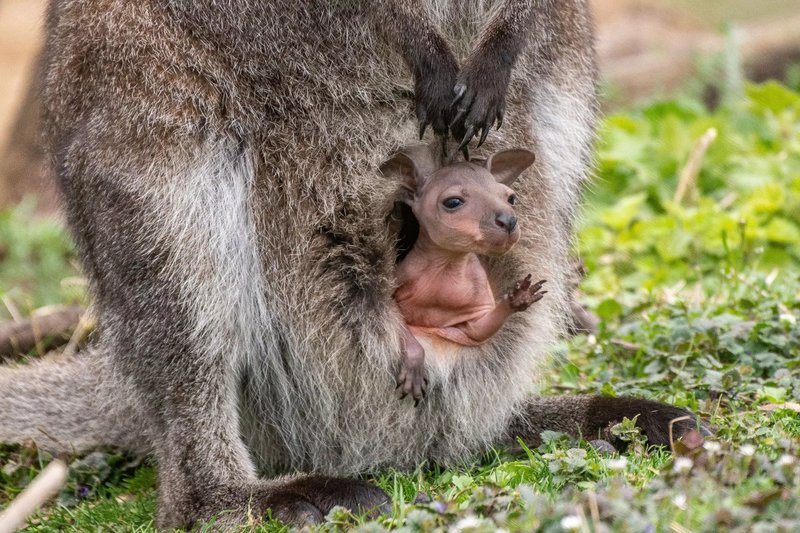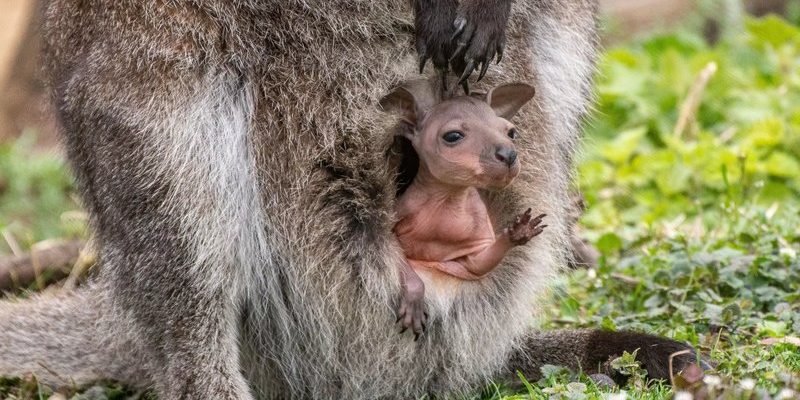
You might think wallabies are just smaller kangaroos, but they’re their own unique breed, with specific traits that help them adapt to rugged terrains and variable climates. Imagine living in a place where food is sparse, temperatures swing wildly, and you have to dodge predators. That’s a daily reality for wallabies, but they’ve got some tricks up their sleeves. Let’s explore how these clever marsupials manage to survive against the odds.
Their Unique Adaptations
Wallabies have evolved some incredible physical traits that help them survive in tough environments. One standout feature is their strong hind legs. They may not be as big as kangaroos, but they can hop long distances easily, which is crucial in searching for food. **These powerful legs** help them cover ground quickly, which is essential when food isn’t plentiful.
Another fascinating adaptation is their fur. Wallabies have dense, soft fur that not only insulates them from extreme temperatures but also helps them blend into their surroundings. This camouflaging makes it harder for predators to spot them. Imagine being able to blend into the bushes just by standing still; that’s like nature’s hide-and-seek, and wallabies are masters at it.
Finally, their keen senses, especially their hearing and smell, play a significant role in their survival. Wallabies can detect predators from a distance. This heightened sense of awareness allows them to take off before danger gets too close. The combination of their physical strength and sensory skills makes them quite adept at evading threats in the wild.
Diet and Foraging Strategies
You might think it’s easy to find food in the wild, but wallabies face plenty of challenges. Their diet mainly consists of grasses, leaves, and shoots, but availability can fluctuate based on the season. This reliance on vegetation means that wallabies have developed impressive foraging strategies.
In harsh environments, they often forage during cooler parts of the day, like dawn or dusk, to avoid the heat. This behavior resembles a nocturnal lifestyle, allowing them to conserve energy and stay hydrated. Wallabies are also pretty picky eaters, favoring certain plants that offer the most nutrition and moisture, which is crucial for survival.
Interestingly, wallabies can go for long periods without water. They get a lot of hydration from their food, which helps them thrive in dry conditions. You could say they’re pretty good at making every bite count, efficiently converting what they eat into the energy they need to keep hopping along.
Behavioral Adaptations
Beyond physical traits, wallabies have developed several behavioral adaptations to cope with their environments. For instance, they have a unique social structure that helps provide protection. Wallabies often form small groups called mobs. These groups not only offer social interaction but also increase vigilance against predators. It’s like having a built-in security system; more eyes mean better chances of spotting danger.
Another interesting behavior is their tendency to rest during the hottest parts of the day. By finding shade or burrowing into the cooler soil, they avoid overheating. This resting period allows them to conserve energy, which is vital when resources are scarce. They emerge when temperatures are more favorable, ready to nibble on whatever food they can find.
Wallabies also demonstrate impressive adaptability in their habitats. They can adjust their feeding areas based on the availability of food, ensuring they have access to the right nutrients. This flexibility is crucial for surviving in areas where conditions can change rapidly, like during droughts or after bushfires.
The Role of Camouflage and Escape Tactics
Wallabies are undoubtedly good at hiding, but their escape tactics are equally impressive. **Camouflage** is more than just a pretty coat; it’s a survival tool. Their brown and grey fur allows them to blend seamlessly into the foliage of the Australian bush. This natural disguise not only helps them hide from predators but also makes it easier to ambush unsuspecting prey.
When it comes to escaping threats, wallabies rely on their speed and agility. When startled, they can make quick, agile hops in a zigzag pattern, which confuses predators and makes it harder for them to pursue. Imagine trying to catch someone who’s dancing around in a panic—that’s what a predator experiences when trying to catch a wallaby.
Additionally, they are known for their powerful kicks. If a wallaby finds itself cornered, it might use its strong hind legs to kick out at a predator, buying itself precious seconds to escape. It’s a fierce but effective defense mechanism, showing that even small creatures have a way to fight back.
Impact of Climate Change on Wallabies
As resilient as wallabies are, they aren’t immune to the impacts of climate change. Increasing temperatures, changing rainfall patterns, and more frequent extreme weather events can threaten their survival. For example, prolonged droughts can lead to dwindling food sources, forcing wallabies to travel further in search of sustenance. This increased travel can also expose them to more predators and other dangers.
Moreover, habitat destruction due to urban development and agriculture poses a significant risk. As their natural environments shrink or change, wallabies may struggle to find adequate food and shelter. This is a reminder of how interconnected our ecosystems are—every action has a ripple effect.
Conservation efforts are crucial to ensuring that wallabies continue to thrive. These efforts include habitat restoration, protection of natural areas, and public education about the importance of these unique creatures. By raising awareness and taking action, we can help secure a future for wallabies in their native habitats.
The Importance of Wallabies in Their Ecosystem
Wallabies play a vital role in their ecosystems, acting as natural gardeners of their environment. By grazing on various plants, they help control vegetation growth, which promotes a diverse range of plant species. This diversity is essential for maintaining healthy ecosystems, as it supports various animal species and contributes to soil health.
Additionally, wallabies are a food source for many predators, including dingoes and eagles. Their presence in the food chain helps maintain the balance of the ecosystem. If wallabies were to decline significantly, it could lead to an overpopulation of plants and a lack of food for other animals, causing a ripple effect throughout the ecosystem.
Also, they contribute to seed dispersal. As wallabies eat and move through their habitats, they help spread seeds from the plants they consume. This process supports plant regeneration and the overall health of their environments. In a way, wallabies act as unintentional conservationists, promoting the growth and sustainability of their ecosystems.
In conclusion, wallabies are remarkable creatures with unique adaptations that allow them to survive in harsh environments. Through their physical features, clever behaviors, and significance in their ecosystems, they showcase the wonders of nature’s design. As we understand more about their needs and challenges, it becomes clear that protecting these cuddly marsupials is essential—not just for their sake but for the health of the entire ecosystem. Let’s appreciate and celebrate wallabies for the incredible survivors they are!

